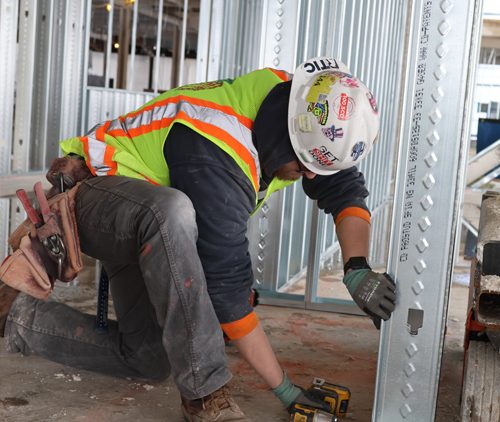A strong union needs skills, benefits and ACTION!

In today’s Newsday, Anthony Villa raises important points about why paying prevailing wages is both right and smart. Supporting these standards leads to high-quality construction and safe job sites, and it’s how we ensure our communities grow in a way that is equitable, sustainable, and strong.
Paying prevailing wages is right and smart
This guest essay reflects the views of Anthony Villa, president and business manager of Local 290, the carpenters union for much of Long Island, and a board member of the North Atlantic States Regional Council of Carpenters.
In an era of rising costs and concern about skilled worker shortages, the importance of prevailing wage laws has never been more clear. These laws ensure that workers on large construction projects are paid fair, consistent wages that reflect the regional standard for their trade. Far from being a burden, prevailing wages are a sound investment in the economy, in Long Island’s future — and in the working men and women needed to build our communities.
Let’s set the record straight: Prevailing wage laws are not about inflating labor costs or imposing “sudden wage hikes,” as critics claim. That’s a myth. In fact, wages for construction workers have struggled to keep up with inflation for years. Many workers, even those in high-skill trades, find it increasingly difficult to support a family in places like Long Island, where the cost of living is high.
Prevailing wages provide a baseline — a standard of fairness and consistency that benefits not only workers but developers and the construction industry as a whole. These laws make labor costs predictable, which is essential for successful development. When you know upfront what you’ll be paying skilled workers, you eliminate surprises, reduce the risk of project delays, and improve the odds of staying on budget. That’s a win for both private developers and government agencies.
But the benefits go beyond balance sheets. The real impact of prevailing wages is felt in people’s lives and in our communities. “Labor costs” aren’t abstract — they’re paychecks for real people. They’re what allow skilled carpenters, electricians, plumbers and other tradespeople to put food on the table, cover a mortgage, and pay for Little League and piano lessons.
Blue collar workers then spend our income on Long Island — often at small businesses that are owned and operated by our neighbors. In fact, for every $1 spent on prevailing wage jobs, $1.50 is generated for the local community.
Critics often try to paint prevailing wage laws as anti-business — but these laws help level the playing field by preventing a race to the bottom, where contractors underbid one another by slashing wages or cutting corners on worker safety. Without prevailing wages, unscrupulous contractors are enabled to bring in cheap, out-of-state labor, often under unsafe and exploitative conditions, just to shave a few dollars off a bid.
We hear countless stories from non-union workers about what happens when there’s no prevailing wage protection. Jobs with no health care, disability benefits or training. Unsafe working conditions. And worst of all, outright wage theft.
Prevailing wage laws ensure fair compensation, essential to maintaining a skilled, reliable workforce. They go hand in hand with training and New York State-approved apprenticeship programs, which create real career paths for young people, especially those who don’t see college as the right choice.
Long Island needs to take this issue seriously. Our region faces enormous infrastructure needs, and we can’t afford to cut corners. We need experienced, qualified tradespeople on every job, and to pay them in a way that reflects the true value they bring to our economy.
Supporting prevailing wages isn’t just the right thing to do, it’s the smart thing to do. It means high quality construction and safe job sites, and it’s how we ensure Long Island grows in a way that is equitable, sustainable and strong.
Let’s build a better future — starting with fair pay for a hard day’s work.